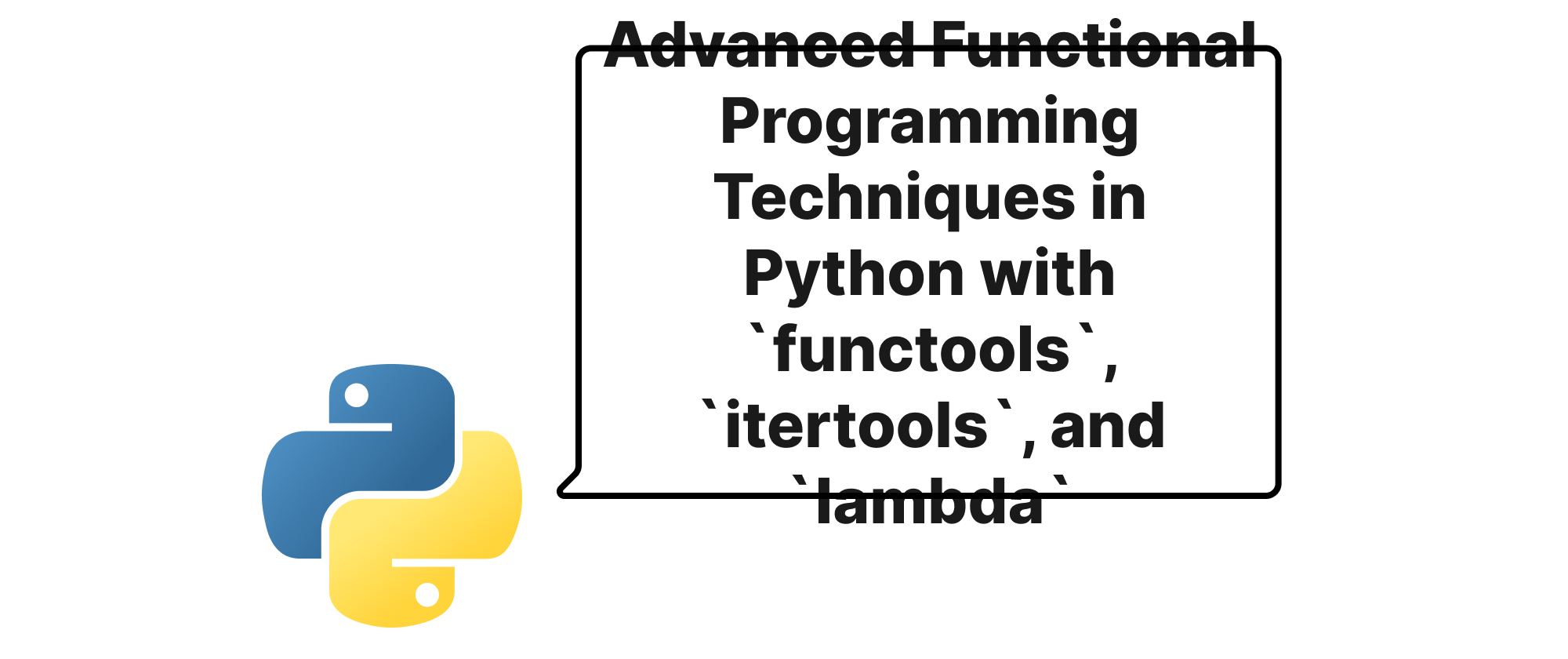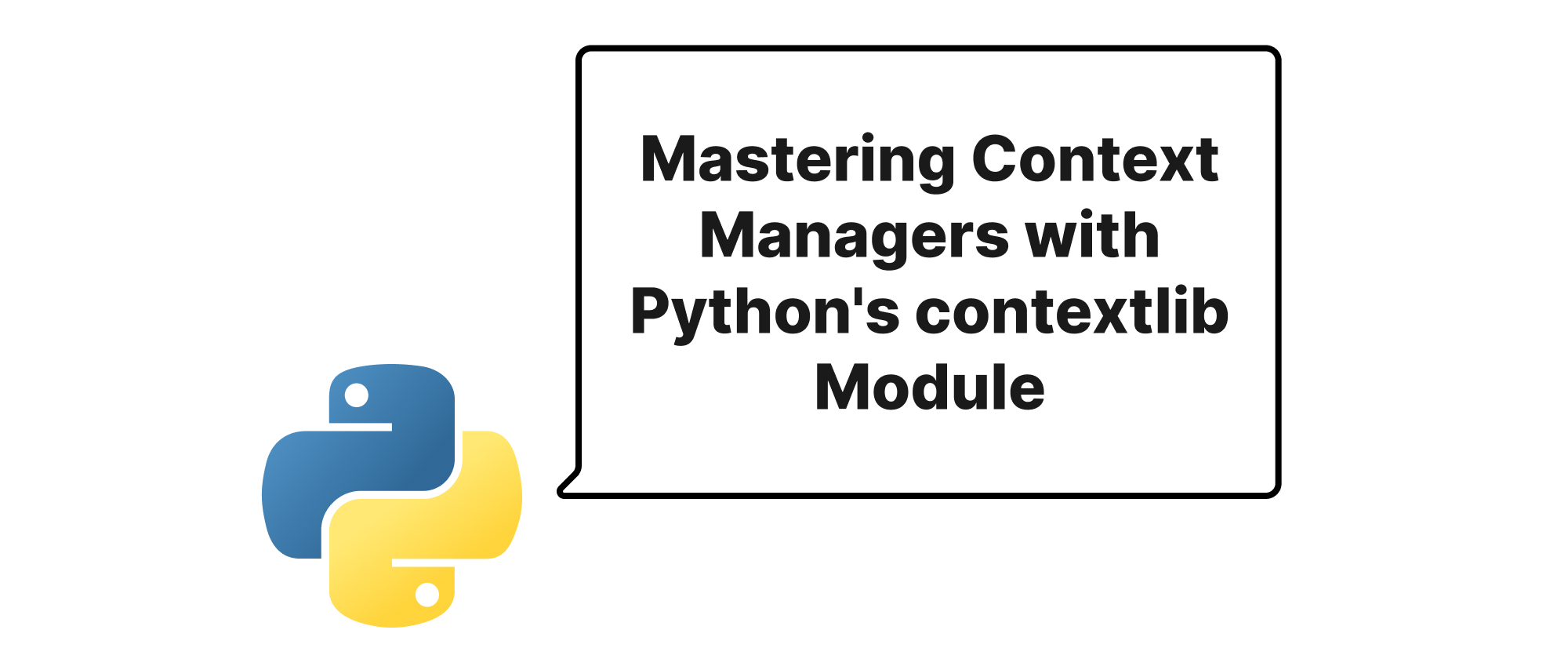Advanced Functional Programming Techniques in Python with `functools`, `itertools`, and `lambda`
Daniel Hayes
Full-Stack Engineer · Leapcell

Functional programming paradigms have been gaining significant traction across various programming languages due to their benefits in terms of code clarity, testability, and concurrency. Python, while primarily an object-oriented language, offers robust support for functional programming constructs. Leveraging these capabilities can lead to more elegant, concise, and often more performant code, especially when dealing with data processing and transformations. This article delves into advanced techniques in Python's functional programming toolkit, focusing on the functools and itertools modules, alongside the versatile lambda expressions, to unlock a new level of expressiveness and efficiency in your Python projects.
Understanding the Functional Core
Before diving into advanced manipulations, it's crucial to grasp the core concepts that underpin functional programming in Python. At its heart, functional programming emphasizes functions as first-class citizens. This means functions can be assigned to variables, passed as arguments to other functions, and returned from functions. Key concepts include:
- Pure Functions: Functions that, given the same inputs, will always return the same output and produce no side effects (e.g., modifying global variables or performing I/O). They are deterministic and easier to reason about.
- Immutability: Data, once created, cannot be changed. Instead of modifying existing data structures, new ones are created with the desired changes. This reduces complexity and avoids unexpected side effects.
- Higher-Order Functions: Functions that take one or more functions as arguments or return a function as their result.
map,filter, andsortedare common examples in Python. - Lazy Evaluation: Operations are not performed until their results are actually needed. This can lead to significant performance improvements, especially with large datasets, by avoiding unnecessary computations.
Python provides powerful tools like lambda for creating anonymous functions, and modules like functools and itertools which are specifically designed to facilitate a functional style of programming.
lambda Functions: Concise Anonymous Operations
lambda functions in Python are small, anonymous functions defined with the lambda keyword. They can take any number of arguments but can only have one expression. This expression is evaluated and returned. lambda functions are often used in contexts where a small function is required for a short period, typically as arguments to higher-order functions.
Consider a simple sorting example without lambda:
def get_second_element(item): return item[1] data = [(1, 'b'), (3, 'a'), (2, 'c')] sorted_data = sorted(data, key=get_second_element) print(f"Sorted with regular function: {sorted_data}") # Output: Sorted with regular function: [(3, 'a'), (1, 'b'), (2, 'c')]
Using a lambda function makes this much more concise:
data = [(1, 'b'), (3, 'a'), (2, 'c')] sorted_data_lambda = sorted(data, key=lambda item: item[1]) print(f"Sorted with lambda: {sorted_data_lambda}") # Output: Sorted with lambda: [(3, 'a'), (1, 'b'), (2, 'c')]
lambda functions shine when combined with map, filter, and reduce (from functools), allowing for compact transformations and filtering of sequences.
numbers = [1, 2, 3, 4, 5] # Map: square each number squared_numbers = list(map(lambda x: x * x, numbers)) print(f"Squared numbers: {squared_numbers}") # Output: Squared numbers: [1, 4, 9, 16, 25] # Filter: keep only even numbers even_numbers = list(filter(lambda x: x % 2 == 0, numbers)) print(f"Even numbers: {even_numbers}") # Output: Even numbers: [2, 4]
The Power of functools: Reusable Function Builders
The functools module provides higher-order functions that act on or return other functions. It's a cornerstone for more advanced functional programming patterns.
functools.partial: Freezing Arguments
partial allows you to "freeze" some arguments or keywords of a function, creating a new function with fewer arguments. This is useful for creating specialized versions of more general functions.
Imagine a power function:
def power(base, exponent): return base ** exponent # Create a specialized 'square' function square = functools.partial(power, exponent=2) print(f"Square of 5: {square(5)}") # Output: Square of 5: 25 # Create a specialized 'cube' function cube = functools.partial(power, exponent=3) print(f"Cube of 3: {cube(3)}") # Output: Cube of 3: 27
This pattern makes code more readable and reusable by eliminating repetitive argument passing.
functools.reduce: Aggregating Sequences
reduce (often imported directly from functools) applies a function of two arguments cumulatively to the items of a sequence, reducing the sequence to a single value. It's conceptually similar to a 'fold' operation in other languages.
To sum a list of numbers:
import functools numbers = [1, 2, 3, 4, 5] sum_all = functools.reduce(lambda x, y: x + y, numbers) print(f"Sum using reduce: {sum_all}") # Output: Sum using reduce: 15
It can also be used for more complex aggregations, like finding the maximum:
max_value = functools.reduce(lambda x, y: x if x > y else y, numbers) print(f"Max using reduce: {max_value}") # Output: Max using reduce: 5
functools.wraps and Decorators
While not strictly a data transformation tool, functools.wraps is essential for building robust decorators. Decorators are higher-order functions that modify or enhance other functions. wraps helps preserve metadata (like __name__, __doc__) of the decorated function, making debugging and introspection easier.
import functools def log_calls(func): @functools.wraps(func) def wrapper(*args, **kwargs): print(f"Calling {func.__name__} with args: {args}, kwargs: {kwargs}") result = func(*args, **kwargs) print(f"{func.__name__} returned: {result}") return result return wrapper @log_calls def add(a, b): """Adds two numbers.""" return a + b print(f"Documentation for add: {add.__doc__}") # Output: Documentation for add: Adds two numbers. add(10, 20) # Output: # Calling add with args: (10, 20), kwargs: {} # add returned: 30
Without functools.wraps, add.__doc__ would incorrectly point to wrapper.__doc__.
The Iterators Toolkit: itertools for Efficient Iteration
The itertools module provides a set of fast, memory-efficient tools that are useful for creating and manipulating iterators. These functions are often more efficient than manual loop implementations, especially for large datasets, because they operate lazily and produce items one by one.
itertools.count, itertools.cycle, itertools.repeat: Infinite Iterators
These functions generate infinite sequences, useful for cases where you need a continuous stream of values.
import itertools # count(start, step) for i in itertools.count(start=10, step=2): if i > 20: break print(f"Count: {i}", end=" ") # Output: Count: 10 Count: 12 Count: 14 Count: 16 Count: 18 Count: 20 print() # cycle(iterable) count = 0 for item in itertools.cycle(['A', 'B', 'C']): if count >= 7: break print(f"Cycle: {item}", end=" ") # Output: Cycle: A Cycle: B Cycle: C Cycle: A Cycle: B Cycle: C Cycle: A count += 1 print() # repeat(element, [times]) for item in itertools.repeat('Hello', 3): print(f"Repeat: {item}", end=" ") # Output: Repeat: Hello Repeat: Hello Repeat: Hello print()
itertools.chain: Combining Iterables
chain takes multiple iterables and treats them as a single sequence.
list1 = [1, 2, 3] tuple1 = ('a', 'b') combined = list(itertools.chain(list1, tuple1)) print(f"Chained: {combined}") # Output: Chained: [1, 2, 3, 'a', 'b']
itertools.groupby: Grouping Consecutive Elements
groupby takes an iterable and a key function, returning an iterator that yields consecutive keys and groups. This is incredibly powerful for processing sorted data.
data = [('A', 1), ('A', 2), ('B', 3), ('C', 4), ('C', 5)] for key, group in itertools.groupby(data, lambda x: x[0]): print(f"Key: {key}, Group: {list(group)}") # Output: # Key: A, Group: [('A', 1), ('A', 2)] # Key: B, Group: [('B', 3)] # Key: C, Group: [('C', 4), ('C', 5)]
Note that groupby only groups consecutive elements. For grouping arbitrary elements, the data usually needs to be sorted first.
itertools.permutations, itertools.combinations, itertools.product: Combinatorics
These functions are invaluable for generating combinations and permutations.
elements = [1, 2, 3] # Permutations: order matters perms = list(itertools.permutations(elements)) print(f"Permutations: {perms}") # Output: Permutations: [(1, 2, 3), (1, 3, 2), (2, 1, 3), (2, 3, 1), (3, 1, 2), (3, 2, 1)] # Combinations: order does not matter combs = list(itertools.combinations(elements, 2)) print(f"Combinations (r=2): {combs}") # Output: Combinations (r=2): [(1, 2), (1, 3), (2, 3)] # Product (Cartesian product) prod = list(itertools.product('AB', 'CD')) print(f"Product: {prod}") # Output: Product: [('A', 'C'), ('A', 'D'), ('B', 'C'), ('B', 'D')]
Real-World Applications and Combining Techniques
These powerful tools often work best in concert. Consider a scenario where you need to process log files, group events by type, and then perform some aggregation.
import functools import itertools logs = [ {'timestamp': '2023-01-01', 'event_type': 'ERROR', 'message': 'Disk full'}, {'timestamp': '2023-01-01', 'event_type': 'INFO', 'message': 'Service started'}, {'timestamp': '2023-01-02', 'event_type': 'ERROR', 'message': 'Network down'}, {'timestamp': '2023-01-02', 'event_type': 'WARNING', 'message': 'High CPU usage'}, {'timestamp': '2023-01-01', 'event_type': 'ERROR', 'message': 'Memory leak'} ] # 1. Sort logs by event_type for groupby to work correctly sorted_logs = sorted(logs, key=lambda log: log['event_type']) # 2. Group logs by event_type using itertools.groupby grouped_by_type = {} for event_type, group in itertools.groupby(sorted_logs, lambda log: log['event_type']): grouped_by_type[event_type] = list(group) print("Grouped Logs:") for event_type, group_list in grouped_by_type.items(): print(f" {event_type}: {len(group_list)} events") # For a specific type, like ERROR, let's process further if event_type == 'ERROR': # 3. Use map and lambda to extract messages for ERROR events error_messages = list(map(lambda log: log['message'], group_list)) print(f" Error Messages: {error_messages}")
This example demonstrates sorting with a lambda, grouping with itertools.groupby, and then transforming results with map and another lambda. This functional approach often results in code that is easier to read, debug, and parallelize.
Conclusion
Mastering functools, itertools, and lambda functions opens up a realm of possibilities for writing more expressive, efficient, and maintainable Python code. By embracing functional principles like immutability and higher-order functions, you can elegantly handle complex data transformations and computations, leading to a more robust and Pythonic development experience. These tools allow you to compose powerful operations from simpler, more focused functions, elevating your Python coding style.


